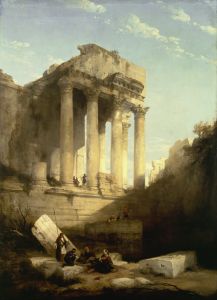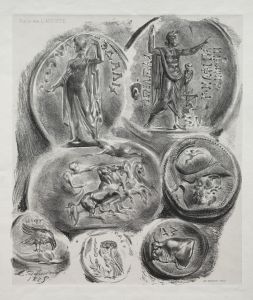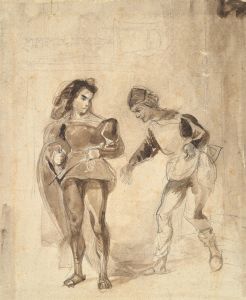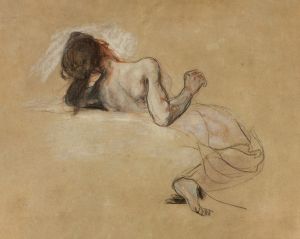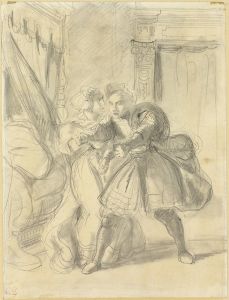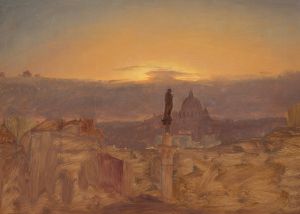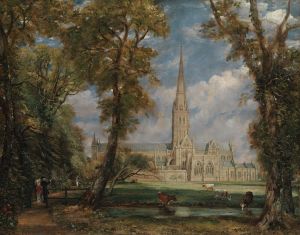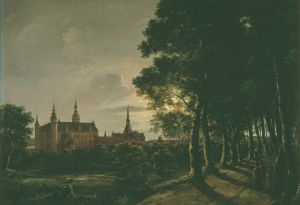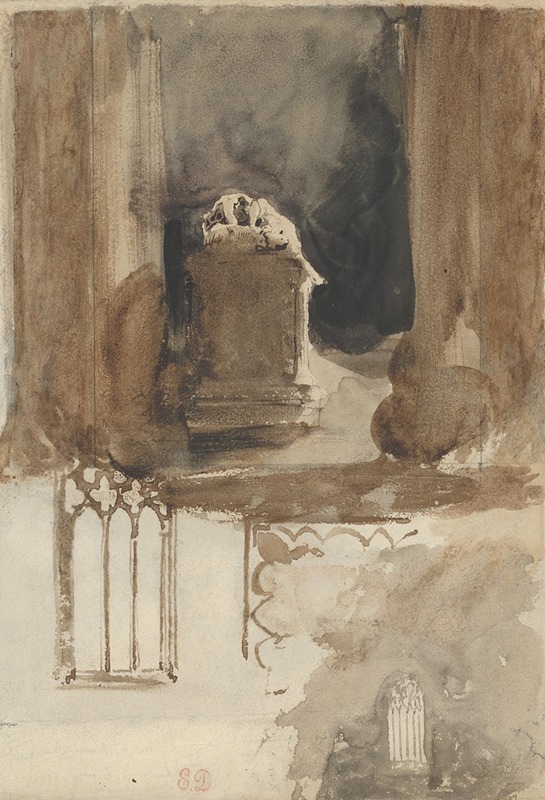
A Tomb and Studies of Windows in the Church of Valmont Abbey
A hand-painted replica of Eugène Delacroix’s masterpiece A Tomb and Studies of Windows in the Church of Valmont Abbey, meticulously crafted by professional artists to capture the true essence of the original. Each piece is created with museum-quality canvas and rare mineral pigments, carefully painted by experienced artists with delicate brushstrokes and rich, layered colors to perfectly recreate the texture of the original artwork. Unlike machine-printed reproductions, this hand-painted version brings the painting to life, infused with the artist’s emotions and skill in every stroke. Whether for personal collection or home decoration, it instantly elevates the artistic atmosphere of any space.
Eugène Delacroix, a leading figure of the French Romantic movement, is renowned for his vibrant use of color and expressive brushwork. Among his numerous works, "A Tomb and Studies of Windows in the Church of Valmont Abbey" is a lesser-known piece that reflects his interest in historical and architectural subjects. This work is a testament to Delacroix's fascination with the interplay of light and structure, as well as his ability to capture the essence of a place through his art.
Delacroix was born on April 26, 1798, in Charenton-Saint-Maurice, France. He received his artistic education at the Lycée Louis-le-Grand and later at the École des Beaux-Arts in Paris. His early exposure to the works of the Old Masters, as well as his travels throughout Europe and North Africa, greatly influenced his artistic development. Delacroix's style is characterized by its dynamic compositions, dramatic use of color, and emotive subject matter, which often draw from literature, history, and contemporary events.
"A Tomb and Studies of Windows in the Church of Valmont Abbey" is an example of Delacroix's interest in capturing the architectural and historical essence of his subjects. Valmont Abbey, located in Normandy, France, is a site with a rich history dating back to its founding in the 12th century. The abbey has undergone numerous transformations over the centuries, and its architecture reflects a blend of Romanesque and Gothic styles. Delacroix's work likely captures the intricate details of the abbey's windows and tombs, showcasing his keen eye for architectural elements and his ability to render them with precision and sensitivity.
The painting is a study, which suggests that it may have been part of Delacroix's preparatory work for a larger project or simply an exploration of the abbey's architectural features. Studies like this were common in Delacroix's oeuvre, as he often created sketches and smaller works to experiment with composition, light, and color before committing to a final piece. This approach allowed him to refine his ideas and techniques, ultimately contributing to the depth and complexity of his larger works.
Delacroix's interest in historical and architectural subjects is evident in many of his other works as well. He often drew inspiration from his travels, capturing the essence of the places he visited through his art. His ability to convey the atmosphere and character of a location is a testament to his skill as an artist and his deep appreciation for history and culture.
While "A Tomb and Studies of Windows in the Church of Valmont Abbey" may not be as widely recognized as some of Delacroix's other masterpieces, it remains an important part of his body of work. It reflects his dedication to exploring a wide range of subjects and his commitment to capturing the beauty and complexity of the world around him. Through this piece, Delacroix demonstrates his mastery of both form and content, offering viewers a glimpse into the architectural and historical richness of Valmont Abbey.
In summary, Eugène Delacroix's "A Tomb and Studies of Windows in the Church of Valmont Abbey" is a work that exemplifies his interest in historical architecture and his ability to capture the essence of a place through his art. Although not as famous as some of his other works, it remains a valuable part of his artistic legacy, showcasing his skill and dedication to his craft.





